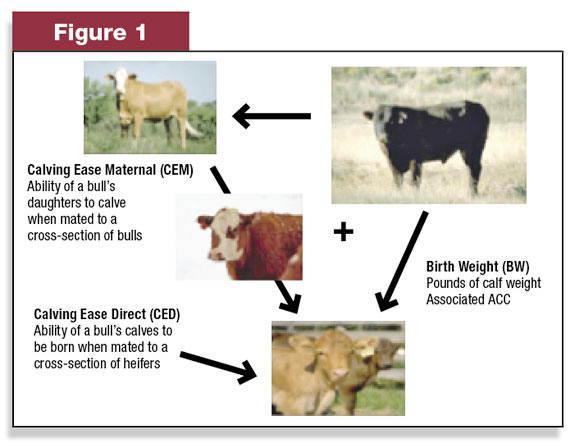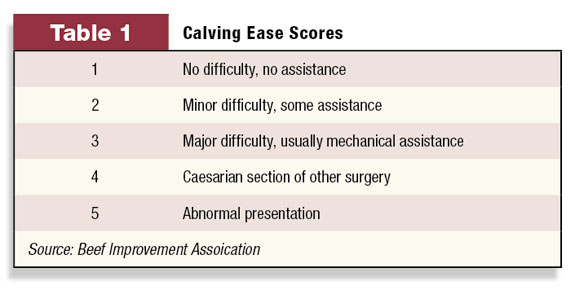However, it is when this process does not proceed properly that concerns the cattle manager. Losses due to death or reduced animal performance have an impact on profitability of the cattle business – let alone the impact of stress and worry on the manager.
In the cattle industry we often hear the terms “genotype” and “phenotype” when referring to cattle traits. “Genotype” is the term used to describe the hereditary information of an animal, even if that information is not expressed.
“Phenotype” is the animal’s actual observed characteristics, such as how they look, how they develop or how they behave. The distinction of these terms is fundamental to using available tools to improve cattle.
It is the animal’s physical properties (phenotype) that ultimately determine the performance of that animal, while the inheritance of physical properties (genotype) occurs through the transfer of genes from the animal’s parents.
The transmission of genes from parents to offspring is under the control of complex biological mechanisms. Expected progeny differences, or EPDs, have been developed as a tool to predict the genetic merit of cattle.
Use of EPDs assists managers in making wise genetic decisions with a level of confidence. Use of EPDs to reduce calving difficulty has enabled the cattle industry to make great strides over the past 30 years.
There are three EPDs computed and reported by most beef breeds for use in reducing calving difficulty. They are: Birth Weight EDP (BWEPD), Calving Ease Direct (CED) and Calving Ease Maternal (CEM). These terms are generally defined as follows:
Birth Weight EPDs
BWEPDs are expressed in pounds of calf weight. A lower numerical value for BWEPD is considered favorable. As with all EPDs, a comparison of the BWEPD between two bulls will provide a good method to evaluate how these bulls’ genotype for birth weight differ from each other.
In studies involving birth weight data, birth weight EPDs have been shown to be the most accurate predictor of calf birth weight. Birth weight EPDs are computed from data provided from cattle breeders to breed associations.
Measured birth weights from all females (both first-calf heifers and cows) reported are used to predict the influence of genes transmitted from the bull that control birth weight of calves he sires.
It is important to remember that birth weight is an “indicator trait” since it indicates the risk that calving difficulty may result. While birth weight is an indicator, calving ease is the true trait of interest to cattle managers. A trait of interest is sometimes called an “economically relevant trait” because it is the trait that has a direct economic impact.
Calving Ease Direct EPDs
This number predicts the average difference in ease with which a sire’s calves will be born to first-calf heifers, compared to calves from another sire. Calving ease direct EPDs are a tool that allows cattle managers to select sires to mate to heifers to increase the probability of easier calving.
Higher CED EPDs are typically favorable and are in units of percentage unassisted births in first-calf heifers. Although there is more uniformity of how calving ease EPDs are reported than there was in previous years, it is still advisable to study the meaning of calving ease EPDs separately for each breed.

Calving Ease Maternal EPDs:
Calving ease maternal EPDs estimate the ability of a bull’s daughters to calve easily when mated to a cross-section of sires. These EPDs provide a genetic tool for use in choosing sires for replacement heifers.
Similarly to CED EPDs, a CEM EPD is expressed in units of percentage unassisted births, and a higher value is more favorable. Figure 1 illustrates how the genetic impact of a bull is expressed in birth weight and both direct and maternal calving ease EPDs.
Calving ease scores are subjective scores assigned by the person reporting the data to the breed association. (See Table 1.) These scores are based on a standardized system developed by the Beef Improvement Federation.
In summary, perhaps a few explanatory comments about using genetic information to reduce calving difficulty may be helpful:
EPDs are computed within specific databases, which in most cases are from breed associations.

Methodology for computing across-breed and multi-breed EPDs is more commonly used in recent years than previously. However, in most instances EPDs are breed-specific, since they are generated from specific breed databases.
Birth weight is an indicator trait. Calving ease is the trait of interest for managers interested in reducing calving difficulty.
Birth weight data from all animals in a database are used to compute birth weight EPDs. This includes male and female calves born from all ages of dams.
Since the incidence of calving difficulty in mature cows is very low, calving ease EPDs are designed primarily as a genetic tool for reducing incidence of calving difficulty in heifers.
Abnormal presentations are excluded from computations of calving ease.
Cattle managers have many tools available for reducing the incidence of calving difficulty. Expected progeny differences provide a primary resource for estimating the genetic influence that sires will have on birth weight of the calves they sire and the ease with which their calves will be born. Using this information has proven effective in reducing calving difficulty in beef cattle. ![]()
PHOTO
The animal’s physical properties (phenotype) ultimately determine the performance of that animal, while the inheritance of physical properties (genotype) occurs through the transfer of genes from the animal’s parents. Photo by Show-Me Agri Comm.









